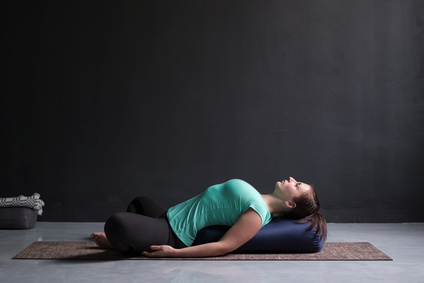There is a lot of uncertainty right now…
There is uncertainty about the economy, our finances, our jobs, and our health. It may feel like a lot of things are outside of our control, and our minds are busy imagining worst-case scenarios. In other words, we are living in anxiety and fear.
It’s easy to shut the mind off when watching Netflix or scrolling through the Internet, but as soon as those distractions are off, our minds go back to the same uneasy thoughts. Often, we don’t even catch ourselves until we’ve been at it for a while.
How can meditation help?
You see, our minds are just trying to help.
They want to prepare us for any future problems. But unless you are already in the worst-case scenario, there is no action in the present moment that you can take to do anything about it. It’s always good to be aware and prepared for future possibilities. But if we spend all of our present free time worrying about those possibilities, it is not only unhelpful, but it can even paralyze us from taking any helpful pre-emptive actions.
Furthermore, it takes away our peace.
It’s important to note that there are things happening right now that are outside of our control. Worrying about them does not give us that control back. Once again, it takes away our peace. Worrying does not help us, but it does stress us out.
Meditation is not magic. But… it can help calm the mind. It can help confront the underlying fears and anxieties that are keeping us awake at night and taking away our peace during the day. It can help us let go of the need to control everything around us, and surrender to the situation we find ourselves in. Some therapists even call this practicing “radical acceptance”.
Below is a meditation guide to help welcome the unwelcome thoughts and fears, realizing they are not as bad as they seem, and then letting them go peacefully…
Even five minutes of meditation is a good place to start, but this one may be more helpful if you give yourself at least 10-15 minutes. You can even set up the timer on your phone so you stay within your desired allotted time! (Tip: it’s less jarring to come out of the meditation if you select a pleasant ringtone for when the timer ends.)

Meditation…
Find a comfortable place to sit. It can be in a straight-backed chair, on the floor, or anywhere else.
Rest your hands in your lap palms up, or on your knees (palms up or down).
Take a few deep, slow breaths, aware of your lunges filling up with air, then exhaling fully. As you do this, slowly close your eyes.
For the next 2-3 minutes, become aware of your breathing, focusing on the coming and going of your breath. Or, if you choose to, on the sounds around you, wherever you happen to be.
Alternatively, you can even focus on how your body is feeling, starting from your head and working all the way down to your feet. Try one session with one technique and the next with another technique. You may find one more helpful than another.
You may have thoughts come and go during your time of focus. That’s okay. Your mind’s chatter is normal. As soon as you become aware that your mind is chattering, consciously go back to your focus. This could be your lungs filling up, or the sound of traffic outside, or the awareness of your fingertips as you continue to scan your body…
After those few minutes, begin to focus only on the coming and going of your breath. It helps to count to ten… one for the end of your inhale, two for the end of your exhale, three for the end of your inhale… and so forth.
Now… whenever a thought pops into your head, do not dismiss it to return to your count. Instead, consciously become aware of that thought (and any previous thoughts that may have led to it from a path of association). Acknowledge how it makes you feel, if there are any strong emotions that arise with it. You can even inwardly say to it, “I welcome this thought.” Once you feel like you have given it enough attention, imagine releasing it. Releasing it can be imagining a cloud float away, or a wave ebb and flow, or even letting go of a balloon. With that, you may now restart your count.
Continue this process for the next five minutes or more… Welcome each though, allow it instead of resisting it, and then let it go. In this way, you are becoming aware of the mind chatter and going with the flow, without allowing it to take over you completely.
If a particularly painful or fearful thought pops up, acknowledge and welcome it as well. This time, pay attention to where you feel it physically. Does it cause tension in your gut or shoulders? Does it change your posture or breathing pattern? Pay close attention to these physical changes, allow them to be. Our thoughts can cause physical changes but we will be okay. In your mind, ask yourself why this thought causes fear or anxiety. If you are not satisfied with the answer, ask again, and again until you are. Then, open your eyes and become aware of your surroundings. You are in the present moment, not in the worst-case scenario your mind is imagining. You are safe. Relax the body and return to your breath count, closing your eyes again.
Continue this process until your timer goes off. Then, wiggle your fingers and toes, stretch the neck if you need to and roll the shoulders. You are ready to go about your day!

As with anything else (working out, eating healthy, practicing a skill, etc.), meditation works best when done consistently. Don’t worry about meditating for a certain amount of time, or “perfectly.” As with anything new, you can start small and build up. Even if you need to fidget, that’s okay! Sitting still helps calm the mind, but it’s not essential for a “successful” meditation. Do what works for you, but try adding meditation into your routine throughout the week!

